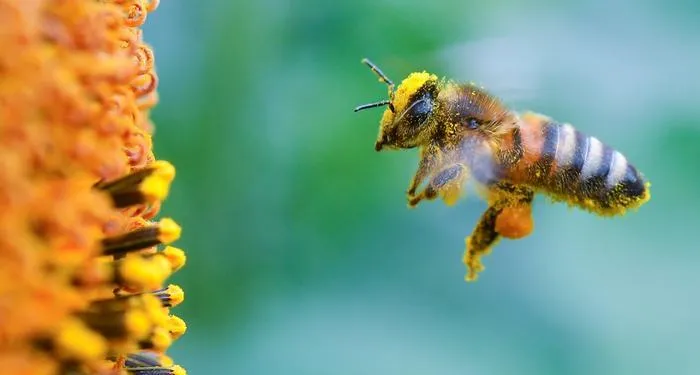According to a research, the biggest cause of allergy in India is dust. So in Germany, people suffer from breathing due to pollen grains. If you go to Europe in April or May, then know these things.
1.Bee season
Bee carrying pollen to the flower of sunflower. This photo was taken closer to Germany's Frankfurt Oder. This is very much seen in the spring season. After the end of the winter, when there is strong sunlight, pollen from flowers blooms out. The more beautiful they look at, the same proves to be equally dangerous for the health of many people.

2.Eye-trick
This is not a picture of the islands spread over the sea, but the pollen is scattered on the roof of a car. This picture was taken in Germany's Stuttgart. What is the amount of pollen grains in the air, it depends on how the weather is. If spring comes slowly after the winter, pollen is less likely to cause people. But if suddenly the weather changes, the pollen spreads all around.

3.Walnut tree
This tree has both male and female parts, so it does not need bees. Pollination is possible only by air. Many trees pollinate in the month of April and May. In this way many people have to keep in mind that which trees are present around them, because they become the cause of allergic reactions. Everyone can be allergic to different trees.
 !
!
4.Fly in the air
It's like the haze here that is actually pollen. This photo is near a lake in Bavaria Province. In the spring season, the crops of mustard bloom in Germany. Yellow haze is also seen when there is yellow and yellowish sunlight. For those who have allergy, it can be deadly. In this weather, eye irritation, cough, sneezing and headache are common.
5.Chestnut tree
It is also a kind of walnut and its trees are very popular in Germany. In the spring season, the flowers of white and pink get out. These trees depend on bees and other insects for pollination.
